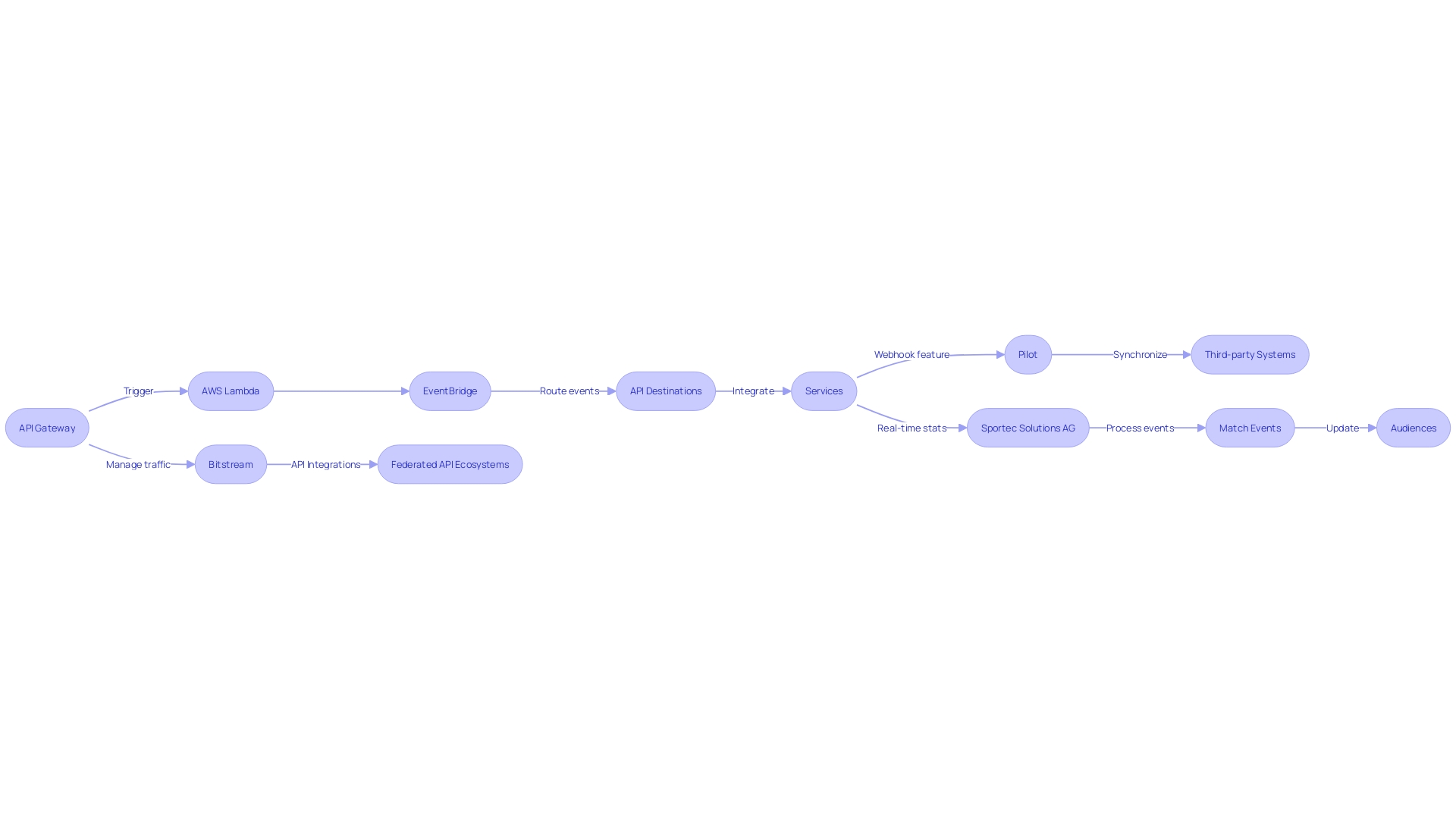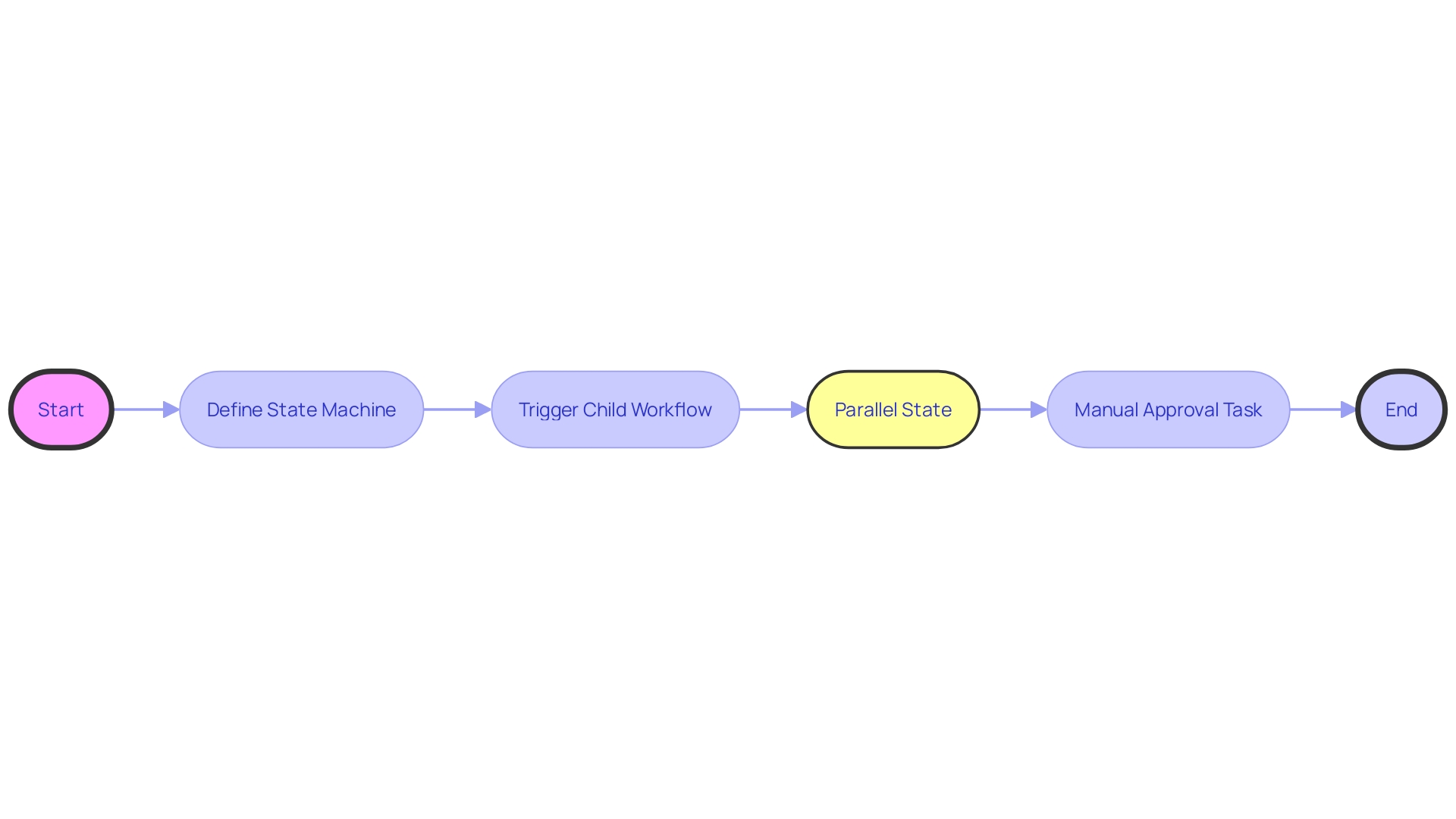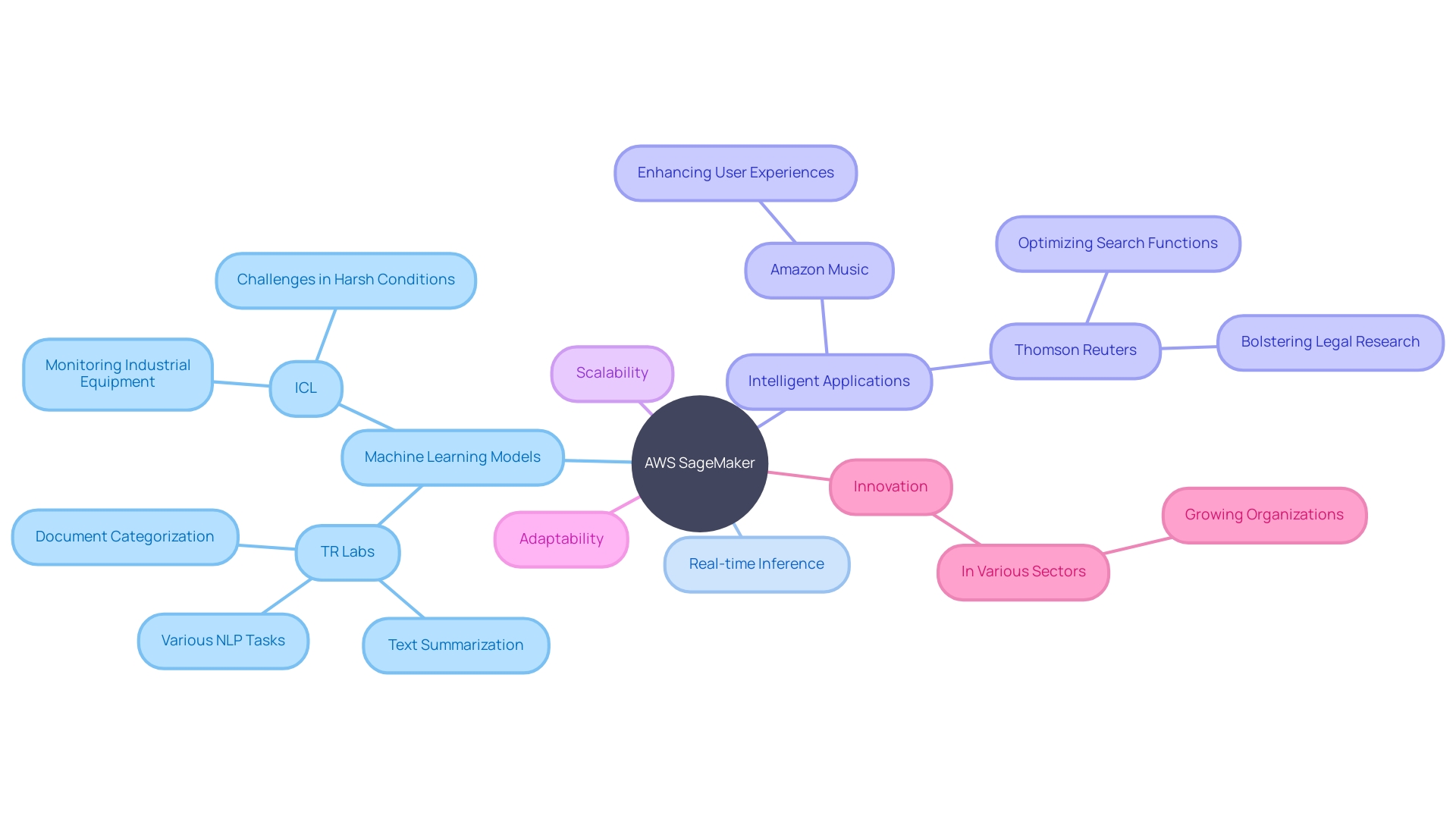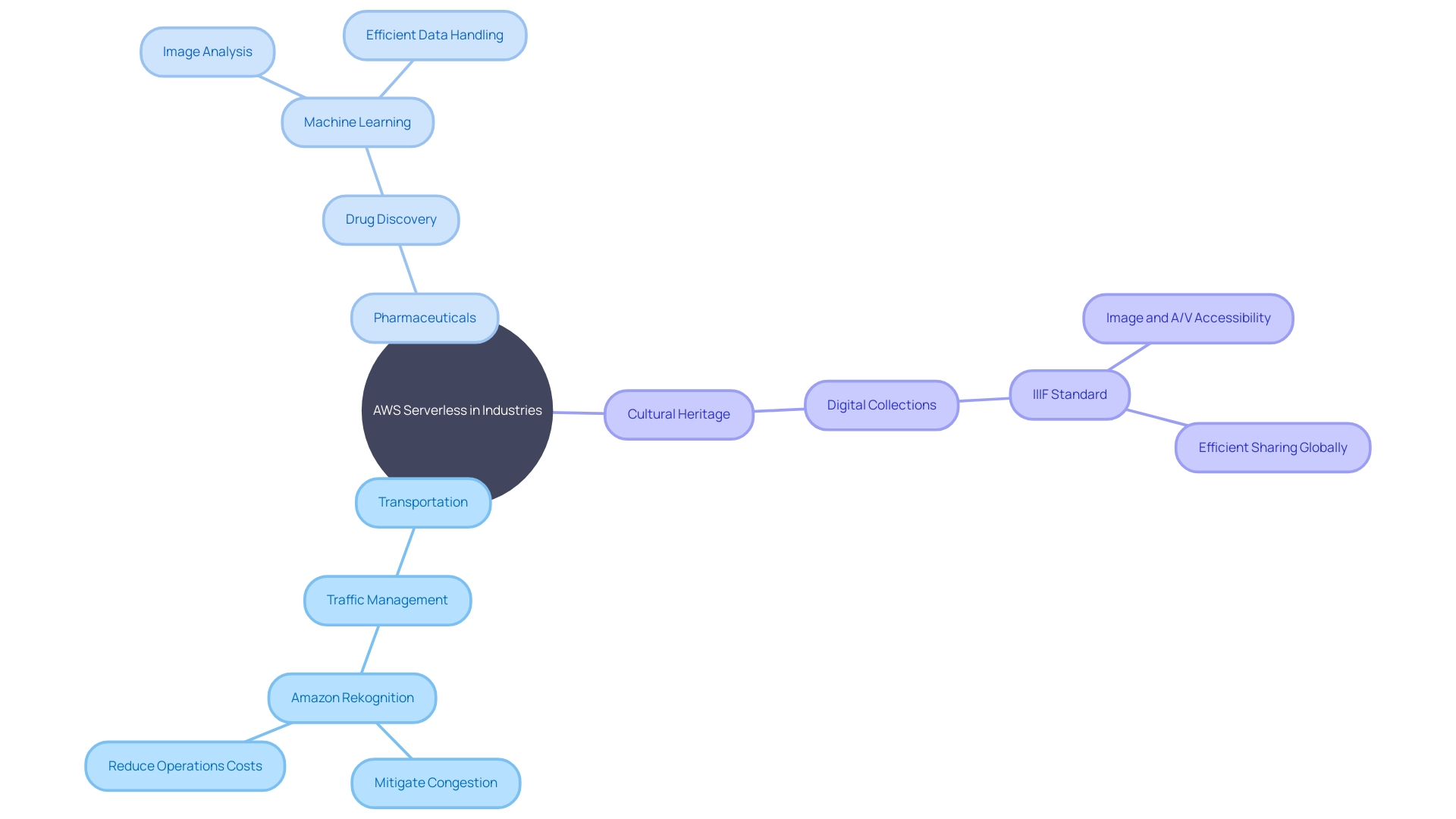Introduction
Amazon Web Services' AWS Lambda is a serverless computing platform that has revolutionized the way developers deploy and manage applications. By abstracting the server layer, Lambda allows code execution in response to triggers without the need for dedicated server management. This functionality has a wide array of applications across industries.
From drug discovery in the pharmaceutical sector to enhancing accessibility of digital collections in libraries, AWS Lambda has proven to be a powerful tool for streamlining operations and increasing efficiency. However, the reliability of AI technology like AWS Lambda remains under scrutiny, highlighting the need for ongoing vigilance in the deployment of AI technologies. Despite this, the potential of AWS Lambda continues to grow with use cases that include traffic congestion mitigation and cost-effective mass email distribution.
With its seamless API Gateway integration and ability to foster scalable and secure serverless interactions, AWS Lambda is at the forefront of serverless computing innovation, paving the way for a future where operational overhead does not impede technological progress.
Real-World Examples of AWS Lambda
'Amazon Web Services' AWS is a serverless computing platform that has transformed the way developers deploy and manage software. By abstracting the server layer, the platform enables code execution in response to triggers without the need for dedicated server management. This functionality has a wide array of applications across industries.
For example, Vertex Pharmaceuticals, with the help of their Senior Director of Software Engineering and Director of Cloud Architecture, effectively implemented AWS serverless computing in their drug discovery process. By utilizing machine learning techniques for image segmentation, AWS played a pivotal role in analyzing microscope images to evaluate drug interactions with biological materials. This not only optimized the analysis of extensive experimental information but also greatly enhanced the precision of their research findings.
Furthermore, the Northwestern University Libraries (NUL) utilized AWS serverless computing to improve the accessibility of their digital collections. By integrating the International Image Interoperability Framework (IIIF) with AWS services, NUL created a system that allows researchers to deeply analyze digitized resources without the need for extensive data transfers. This innovative approach not only conserves bandwidth but also provides a shared framework for cultural institutions to disseminate their collections more effectively.
Despite these successes, the reliability of AI technology like AWS remains under scrutiny, as evidenced by a recent incident involving Amazon's Alexa. The voice assistant provided inconsistent and politically biased information, raising concerns about Ai's impartiality and accuracy. Such incidents highlight the need for ongoing vigilance in the deployment of AI technologies.
Nevertheless, the potential of AWS serverless computing continues to grow. With use cases that include traffic congestion mitigation through Amazon Rekognition and the cost-effective distribution of mass emails using Simple Email Service (SES), it's clear that AWS is at the forefront of serverless computing innovation. It enables seamless API Gateway integration, fostering scalable and secure serverless interactions that pave the way for a future where operational overhead does not impede technological progress.
API Gateway Integration
AWS Lambda's integration with API Gateway exemplifies a serverless architecture's agility in creating robust APIs. These functions respond to API Gateway events, forming an effective front-end for serverless applications and ensuring scalable API traffic management. For example, companies such as pilot have utilized AWS to develop webhook features for efficient information synchronization with third-party systems, essential for enhancing customer service in the energy sector. Similarly, Sportec Solutions AG has utilized AWS's serverless offerings to deliver near real-time sports statistics, processing millions of events during matches to provide timely updates to audiences. The seamless EventBridge and API Destinations integration exemplify how AWS technologies facilitate the secure and reliable exchange of data, catering to the evolving needs of dynamic enterprises. Additionally, as APIs become increasingly pivotal in business, politics, and society, understanding and managing these integrations, as services like Bitstream offer, is essential for any platform looking to harness the full potential of distributed and federated API ecosystems.

Serverless Cron Jobs
AWS Lambda's serverless design is not only meant to enhance application development and deployment but also to streamline task automation, such as running cron jobs. Cron jobs are automated, scheduled tasks that are essential in the management of repetitive tasks within a system. By utilizing AWS Functions, you can easily schedule these tasks, making use of time-based events like cron expressions to automate operations.
The integration of a serverless function with cron jobs eliminates the need for dedicated servers, thus reducing infrastructure costs and administrative overhead. This is especially advantageous for sending mass emails using AWS in conjunction with the Simple Email Service (SES), as it offers a cost-effective, scalable solution without the requirement for capital investment in physical servers and software licenses.
Furthermore, the capability of AWS Lambda extends beyond basic task automation to more complex functions. For example, it allows for seamless API Gateway integration, enabling scalable and secure serverless interactions. This can empower businesses to create dynamic, responsive applications that can handle a vast number of requests without compromising on performance.
Common pitfalls, such as permissions issues or incorrect file paths, can be easily avoided with the simplified operational model of the serverless function. As a zero-administration service, AWS manages scaling and fault tolerance, allowing tasks to run efficiently without the concerns typically associated with traditional server-based cron jobs.
By embracing the serverless paradigm offered by AWS, businesses can not only streamline their operations but also explore new horizons in cloud computing, unlocking the full potential of every line of code and paving the way for a future where operational overhead is a thing of the past.
Real-Time Data Processing with Kinesis
Utilizing the potential of AWS Lambda in combination with Amazon Kinesis presents a world of opportunities for real-time information processing. Kinesis, a powerful managed streaming service, enables organizations to handle streaming information seamlessly. This integration enables immediate processing and transformation as it is received, allowing businesses to perform real-time analytics, promptly generate alerts, and initiate other consequential actions derived from the information. This capability is akin to analyzing and responding to a continuous stream of information, akin to a perpetually flowing river, ensuring that data-driven insights and actions are as timely as they are relevant. With a variety of industries adopting data streaming for its real-time processing advantages, the combination of AWS and Amazon Kinesis stands as a vital tool for modern data management and analytics strategies.
File Upload Processing with S3
The robust and scalable object storage service of Amazon S3 is a foundation for many uses, and when combined with AWS's serverless compute service, it transforms into a formidable platform capable of intricate file processing tasks. AWS Lambda's event-driven nature allows it to act immediately upon file uploads to S3 buckets, enabling a wide array of operations such as image resizing, metadata extraction, or format validation without manual intervention.
For instance, Playbook, a platform that deals with a high volume of files daily, leverages such serverless architectures for efficient file handling. Imagine a user uploads a photo to a web platform; the file can be instantly processed to display a thumbnail, GPS data, dimensions, and even an AI-generated description. This level of sophistication in file processing may also extend to advanced image recognition, dynamic scaling, and comprehensive AI-powered modifications.
One notable use of this technology is demonstrated by the Northwestern University Library (NUL), which placed the International Image Interoperability Framework (IIIF) at the core of their digital collections suite. This standard not only streamlines the sharing of cultural heritage globally but also optimizes the delivery of image and audio/visual content, allowing deep analysis while conserving bandwidth.
Additionally, the integration of AWS with S3 is emphasized by the concept of presigned URLs, which simplifies the secure uploading and downloading of files. This is especially helpful for developers aiming to create responsive web apps with seamless backend interactions for file management.
As the digital landscape continues to evolve, the demand for serverless solutions is on the rise, reflected in the Internet traffic growth reported by CloudFlare's Radar 2023 Year in Review. AWS Functions and S3 are at the forefront of this movement, providing developers with the tools to build scalable, efficient, and secure applications that cater to the needs of an increasingly connected world.
Workflow Orchestration with Step Functions
AWS Step Functions orchestrates serverless workflows with precision, allowing the seamless coordination of multiple AWS Lambda functions and integration with various AWS services. It operates as a state machine, defining each action as a state within the workflow, providing a structured approach to automating tasks across the AWS ecosystem. A remarkable characteristic of Step Functions is the Parallel State, which enables the simultaneous execution of multiple tasks, enhancing process efficiency and scalability, especially when managing substantial amounts of information.
For example, think about the situation of drug discovery at Vertex Pharmaceuticals, where machine learning techniques such as image segmentation are used to analyze large amounts of experimental information. Here, Step Functions could be utilized to streamline the data analysis process by orchestrating the sequence in which machine learning models are applied to microscope images, thereby accelerating the identification of potential drug candidates.
The versatility of AWS Step Functions is further demonstrated in the case of a system like GraphBolt, where after a payment confirmation, a workflow could be triggered to generate and send licenses to users. This is made possible by coordinating services such as a payment gateway and AWS serverless functions to automate notifications and information retrieval. The introduction of new features, as highlighted at Ignite 2023, extends the control over workflows, allowing for more complex use cases to be addressed.
In essence, AWS Step Functions is a pivotal tool for architects designing AWS-based solutions, offering a comprehensive suite of operations to construct intricate patterns and workflows, vital for modern cloud computing challenges.

Custom Alexa Skills
AWS has revolutionized the way developers build interactive voice applications, particularly for Amazon's intelligent assistant, Alexa. By utilizing functions, developers can create custom Alexa skills, allowing Alexa to dynamically respond to voice prompts. By offloading the voice interaction processing to AWS, developers can focus on creating personalized voice-driven experiences that resonate with users, whether for entertainment, information, or task automation.
Take, for example, the innovative approach to building a Holiday Planning API. This API demonstrates the agility of AWS Function in responding to user queries with customized itineraries and activity suggestions. With the Serverless Framework, setting up such projects is streamlined, allowing for rapid deployment and iteration.
Beyond individual projects, the influence of AWS Function as a Service can be observed in extensive-scale software. As an example, AWS Rekognition Custom Labels uses a serverless compute service to customize image recognition for particular business requirements, a crucial component of an AI/ML application workflow covering preparation of information and monitoring of models. Furthermore, the incorporation with Amazon Bedrock's Anthropic Claude model demonstrates AWS Lambda's capability to manage substantial amounts of information, comparable to handling more than 500 pages of documents, a confirmation of its scalability and effectiveness.
AWS Lambda's event-driven architecture is a perfect match for serverless computing, providing a robust foundation for handling IoT data processing and automated tasks. The structure's built-in scalability and high availability guarantee that applications can rapidly move from idea to implementation, highlighting the strategic vision of a serverless future where operational burden does not hinder innovation.
In the realm of voice search, current statistics emphasize the increasing trend and the crucial role that AWS plays in addressing this demand. As voice interactions become more prevalent, developers are empowered to create more sophisticated and responsive voice-enabled applications, driven by serverless computing and the transformative power of AWS.
Indeed, the serverless paradigm, epitomized by AWS service, is writing the future of cloud computing—one function at a time. As developers continue to explore and harness its potential, AWS stands out as a cornerstone technology that enables the seamless and secure integration required for today's dynamic digital landscape.
Image and Video Analysis with Rekognition
Leveraging AWS Rekognition in tandem with AWS Lambda can revolutionize the way organizations handle image and video analysis. This powerful combination allows for real-time processing of visual content as soon as it is uploaded to S3, opening up a wide range of uses for different industries. For instance, ICL, a global manufacturing and mining corporation, has seen significant benefits through the integration of these services. In the face of harsh environmental conditions where traditional sensor-based monitoring proved challenging, ICL turned to visual monitoring of industrial equipment to prevent costly machinery failures and environmental damage. By employing AWS Rekognition, they could automate the status checks of machinery, previously done manually by workers, thus enhancing efficiency and scaling the monitoring process while also reducing costs.
In the energy sector, Northpower, a key electricity distributor in New Zealand, has embraced AWS Rekognition to confront the critical turning point in the industry. By applying AI to manage traffic light systems, they've been able to mitigate congestion at intersections and significantly cut operations and maintenance expenses. Traditional traffic signals, whether fixed or dynamic, struggle with the rising number of road users. AWS Rekognition offers a solution by intelligently adjusting traffic lights, improving the flow and safety for cars, pedestrians, and cyclists alike.
Furthermore, Amazon's AI-powered technology is not limited to industrial applications. It extends to everyday platforms such as car-selling websites, where AWS Rekognition can validate the content of uploaded car images, flagging invalid submissions and streamlining the approval process. This showcases the versatility of the Amazon ecosystem, which includes Amazon EventBridge and AWS Step Functions, to create robust, automated systems.
Amazon has also announced the launch of an AI-powered video generator for advertisers, emphasizing the continual innovation in AI technologies. This underscores the potential of AWS Rekognition to transform not just operational tasks but also creative endeavors, by generating video clips from product images, thereby enhancing marketing strategies.
These practical instances showcase the game-changing influence AWS Rekognition and the service can exert across diverse industries, rendering them indispensable resources for enterprises striving to innovate and enhance their operations via technology.
Machine Learning Inference with SageMaker
Leveraging AWS SageMaker, organizations are able to revolutionize their machine learning initiatives by simplifying the creation, training, and deployment of models at an impressive scale. A prime example of this integration is the use of AWS function to interface with SageMaker, allowing real-time machine learning inference. This seamless connection means that when a request is made, trained models can instantly provide predictions, forming the backbone of intelligent applications that utilize machine learning to enhance user experiences. For instance, Amazon Music harnesses AI to elevate their customer's journey, optimizing search functions to cater to the varied and intricate emotional landscapes of its users, even during periods of high demand. Similarly, companies like Thomson Reuters utilize professional-grade AI to bolster legal research, ensuring accuracy and comprehensiveness. Additionally, the TR Labs team's expansion and diversification of ML tasks across various domains highlight the scalability and adaptability required in growing organizations. AWS SageMaker's fully managed service, combined with the operational flexibility of another service, plays a crucial role in such transformative scenarios, driving innovation in a multitude of sectors.

IT Automation with CloudWatch Events
AWS functions, when integrated with CloudWatch Events, offers a potent solution for automating a variety of IT tasks within your AWS environment. This serverless event-driven architecture facilitates real-time operational responses, such as resource scaling, snapshot management, and notification dispatching, triggered by specific conditions or event patterns. For instance, Sportec Solutions AG leveraged a serverless infrastructure to process and analyze over 3.6 million events in near real-time during sports matches, demonstrating the scalability and efficiency of such solutions.
Adopting AWS serverless computing for IT automation not only guarantees a responsive system but also highlights a dedication to innovation without the operational overhead. As mentioned by industry experts, using serverless functions like AWS's function-as-a-service is about shaping the future of cloud computing, enabling developers to concentrate on coding while AWS takes care of scalability and fault tolerance. Furthermore, the cost-effectiveness of the service is emphasized by the lack of fees for unused computing resources, with expenses accrued depending on the quantity of function invocations and the utilization of other AWS offerings.
Including AWS in your IT strategy ensures encryption best practices and complements existing incident management workflows, offering a secure and integrated approach to automation. With AWS's continuous advancements, such as those showcased at AWS re: Invent, the serverless computing service remains a cornerstone of a resilient and future-proof cloud architecture.
Mobile Backend with Cognito
AWS Cognito, the user management solution, is not just an authentication provider but a powerful platform for mobile and web applications, especially when combined with AWS serverless functions. The integration of a serverless compute service with Cognito can be leveraged to construct custom authentication flows, thus enabling a personalized user experience. For example, in the automotive industry's transition to smart vehicles, the requirement for managing large amounts of information effectively is crucial. Cognito and the function can facilitate this by managing user sessions and processing information from various sources like advanced driver assistance systems.
Furthermore, with AWS's cloud services, such as AWS IoT for automotive applications, businesses can gather information at scale, offering the groundwork for features like predictive maintenance or powering AI services. AWS's flexibility allows you to use these services to build scalable solutions tailored to your business needs. As reported by TechRadar Pro, AWS's cloud platform is recognized for its affordability and adaptability, which is why it's a go-to for businesses scaling at their own pace.
Amazon Cognito's user pools serve as the foundation for user authentication, enabling sign-in and sign-out functionalities with the Authenticator UI component, as detailed in various technical guides. By incorporating the function into Cognito, you create a backend that not only authenticates users through user pools but also authorizes their actions via identity pools—much like a hotel key card system, as one expert put it.
Couple this with AWS Amplify's resources and guidance, and you're looking at a robust setup for mobile backend development. By following the steps laid out in Amplify's documentation, developers can create seamless authentication experiences, understanding the long-term impacts of their architectural decisions. With the growing demand for data-driven decision-making, as shown by the 56% increase in Mixpanel report creations, the combination of AWS Cognito and function is a powerful tool for businesses seeking to utilize data in their product and marketing efforts.
Case Studies and Success Stories
AS, a pivotal component of cloud computing services, stands as a beacon of innovation for organizations seeking to enhance operational efficiency and cut costs. By providing a serverless execution environment for code, this service eliminates the requirement for traditional server management, allowing businesses to concentrate on core product development while scaling effortlessly.
A convincing demonstration of the capabilities of a certain technology can be seen in the pharmaceutical industry, where Vertex Pharmaceuticals utilized the power of machine learning to accelerate the process of drug discovery. Partnering with AWS, Vertex developed a system to analyze vast arrays of experimental information, including intricate microscope images, to gauge the efficacy of drug candidates. By training a machine learning model to automate the analysis of these images, researchers could swiftly identify areas of interest, thus optimizing the drug development cycle and leading to potential breakthroughs in treatments.
Furthermore, in the cultural field, the Northwestern University Library (NUL) adopted a new approach to transform the method of accessing and sharing digital collections globally. By integrating the International Image Interoperability Framework (IIIF), NUL crafted a digital suite that enables researchers to deeply analyze high-resolution images without the burden of massive data downloads. This strategic use of the capabilities not only streamlines the dissemination of information but also fosters a unified, efficient experience for the global research community.
These case studies highlight the transformative impact of AWS serverless computing across diverse industries. From streamlining traffic management systems to accelerating the hunt for critical insights in vast data troves, its far-reaching applications are a testament to its role as a catalyst for innovation. As companies like GoDaddy leverage structured approaches to optimize batch processing jobs, the impact of a serverless computing platform in driving data-driven business decisions and customer satisfaction is undeniable. Such success stories herald a new era where AWS Lambda is not merely a technological tool but a stepping stone to achieving remarkable efficiency and growth.

Conclusion
In conclusion, AWS Lambda has revolutionized application deployment and management by abstracting the server layer and enabling code execution in response to triggers. Its wide array of applications across industries highlights its power for streamlining operations and increasing efficiency.
Despite the scrutiny on the reliability of AI technology, the potential of AWS Lambda continues to grow. Use cases include traffic congestion mitigation and cost-effective mass email distribution. With seamless API Gateway integration and secure serverless interactions, Lambda is at the forefront of serverless computing innovation.
Integrating Lambda with API Gateway allows for efficient data synchronization and real-time sports statistics delivery. Lambda's serverless architecture simplifies task automation, reducing infrastructure costs and enabling dynamic, responsive applications.
Lambda's integration with services like Amazon Kinesis and S3 benefits industries such as manufacturing, energy, and advertising by enabling real-time data processing and complex file handling. AWS Step Functions addresses modern cloud computing challenges by orchestrating serverless workflows.
Lambda revolutionizes the development of interactive voice applications, empowering developers to create personalized voice-driven experiences. Leveraging Lambda with services like Rekognition enhances image and video analysis, optimizing operations in various industries.
Combining Lambda with SageMaker simplifies machine learning initiatives, allowing real-time inference for personalized user experiences. Integrating Lambda with CloudWatch Events automates IT tasks, reducing operational overhead and ensuring a secure approach to automation.
Overall, AWS Lambda's transformative impact is evident in real-world case studies and success stories, demonstrating its role as a catalyst for innovation, efficiency, and growth across diverse industries. With its versatility, scalability, and efficiency, Lambda is driving the future of cloud computing.
Unlock the potential of AWS Lambda for personalized voice-driven experiences. Contact us today!




